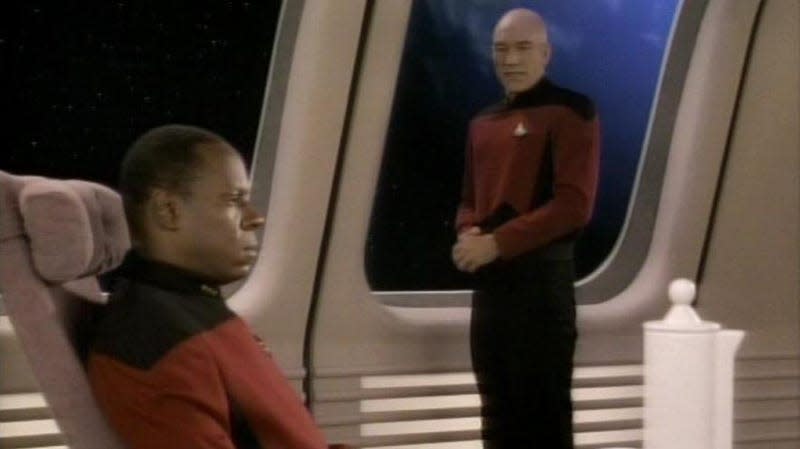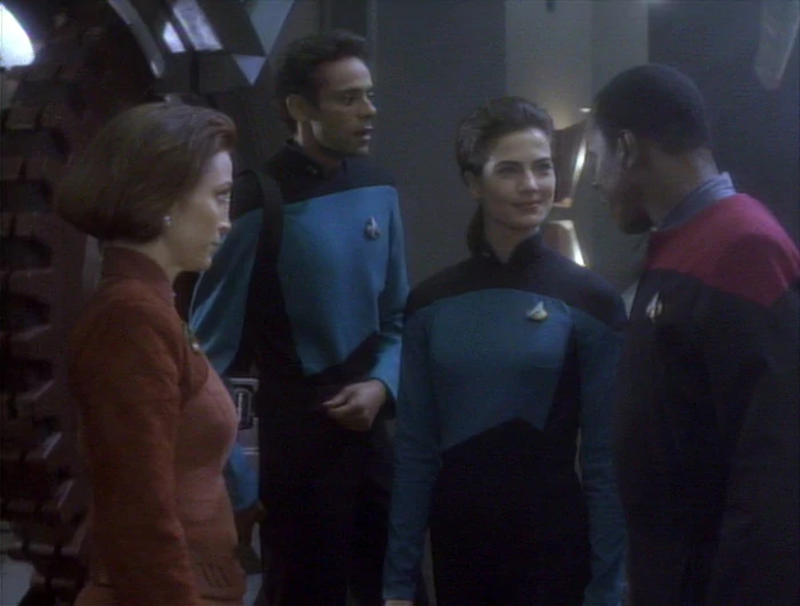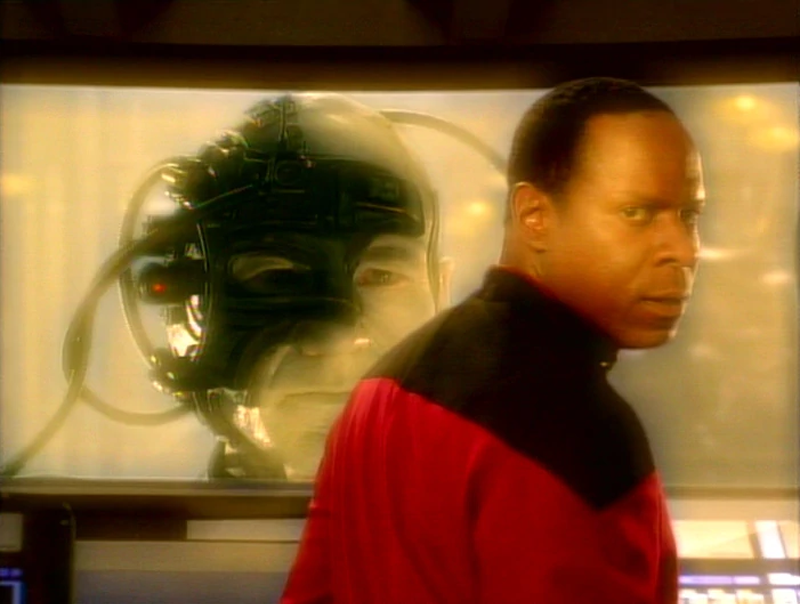30 Years On, Deep Space Nine's Opening Is Incredible Star Trek

- Oops!Something went wrong.Please try again later.
When looking back at Deep Space Nine’s challenging legacy, it’s often the later seasons of the show—where the series and Star Trek at large was flung into the dark heart of the Dominion War—that people turn to as the point that the series really showed itself as something different. But 30 years ago today, the show was already proving that from right out the gate.
“Emissary,” the two-part opening of Deep Space Nine’s first season, aired on January 3, 1993, and from its very first scene it was a show with so much to prove. That Star Trek could do it again after The Next Generation revitalized the franchise, that Star Trek could push boundaries in terms of itself as a saga and for sci-fi television at large. But perhaps above all it was eager to prove something else: that Star Trek could be more complex, more challenging, more willing to poke at the holes within its idealized future than it had ever considered to do so before.
Read more

Opening the series not with the titular Cardassian space station, but on the Federation starship Saratoga during the events of the iconic TNG two-parter “The Best of Both Worlds”—in which an assimilated Captain Picard leads the Borg offensive at Wolf 359, one of the deadliest conflicts in Starfleet history prior to what Deep Space Nine would go on to show during the Dominion War—gives us a bold introduction to both the show’s relationship to Starfleet and to its lead character, Benjamin Sisko. We are immediately thrust into a horrendous loss for the heroic faces of the franchise. The Saratoga is almost immediately compromised by the Borg, no matter the readiness or the calm collectedness of its Starfleet crew. Sisko, barely standing after the ship’s bridge is blasted apart, hobbles through darkened, burning hallways—hallways notedly full of bleeding, terrified civilians, too traumatized to do anything but wail, a stark contrast to the dangers the Enterprise faced in TNG of having civilians aboard ships. And then, in the fires of his quarters as other Starfleet vessels suffer a similarly explosive fate outside the viewport, Sisko is forced to confront the horror of his wife Jennifer’s dead body, buried in the rubble of their former home—and leave it behind as he watches the Saratoga explode from his evacuation shuttle.
This opening scene defines everything else about “Emissary,” whether it’s related to Sisko or not. Throughout the hour and a half story, we are presented with an unromanticized view of Starfleet in a way the original Trek or TNG could only rarely imagine, let alone depict. Sisko and his arriving Federation crew are treated with disdain by the Bajorans and other species that called DS9 home during the Cardassian occupation, know-it-all gadabouts who are here for their interests, not the interests of the people they’ve come to aid. In particular, the arrival of Dr. Bashir as a self-important, idealized go-getter of a Starfleet officer is skewered throughout the episode over and over, from his attempts to flirt with Dax or the way Major Kira dresses him down for treating her people’s post-occupation disarray as an opportunity for personal glory.

Sisko himself is presented as unlike any kind of leading Trek commander we were used to—from the underhanded way he strongarms Quark into keeping his bar on the station’s promenade open, to his petty willingness to disprove Kira’s begrudging view of him as someone who won’t get his hands dirty. If anything, Sisko excels here with his hands as grubby as possible, this potent mix of a man who is capable of doing so much but is still too haunted by the trauma of his prior assignment to be willing to care.
Sisko’s unwillingness to do his duty quietly comes bubbling over when he is put face-to-face with both the idealized hero of the Star Trek franchise at this moment and who he sees as the architect of his grief—Patrick Stewart’s Jean-Luc Picard—to perform the handover to his new duty. Sisko, still so lost from the death of his wife three years after Wolf 359, cannot help but needle Picard for his part in the battle, and similarly Picard’s amicable, polite persona, the man audiences had seen throughout TNG, falls away immediately. The disdain the two have for each other, our new “hero” and our old one, with neither really quite in the right, each too drawn inward and focused on the past, is an encapsulation of everything Deep Space Nine would go on to champion thematically. These are people from an organization that we’ve been given a fantasized view of perfection to in the past, having that image punctured by their human vulnerabilities, and then having to deal with it.

Really, that’s what “Emissary” is largely about, beyond the relatively perfunctory story that emerges in its lower half, as the discovery of the wormhole to the Gamma Quadrant threatens to stoke tensions between the Bajorans and the Cardassians again. As Sisko is forced to navigate first contact with the omnipotent wormhole aliens, and undergoes a pseudoreligious experience that will tie him to the Bajoran spiritual belief system for the rest of the show, this imperfect man is put to the task so often asked of Star Trek’s heroes, to be the perfect representative of an entire society of beings, and he struggles. His attempts to explain the mortal experience to these godlike beings is driven by his inability to let go of his past, and his grief over Jennifer’s death, until he is forced to reconcile with it through this experience.
And it’s crucial that emerging from the wormhole and contact with these beings does not radically alter Sisko’s personality. He’s not “solved” by the end of the episode, even as he picks himself up to move on from his past and into this new chapter of his life and career. He’s still the same man who strong-armed Quark into staying on the station, he’s still the same officer that holds that grudge against Picard. He just has to pick himself up and deal with it, and will continue to deal with throughout Deep Space Nine’s run. Thirty years on, with the series now as rightfully re-evaluated and revered as one of Star Trek’s most dramatically fascinating entries, “Emissary” remains as strong an opening shot across the bough as any Trek show has delivered, right away nailing the things that would make it an all-time great.
Want more io9 news? Check out when to expect the latest Marvel, Star Wars, and Star Trek releases, what’s next for the DC Universe on film and TV, and everything you need to know about the future of Doctor Who.
More from Gizmodo
Sign up for Gizmodo's Newsletter. For the latest news, Facebook, Twitter and Instagram.

